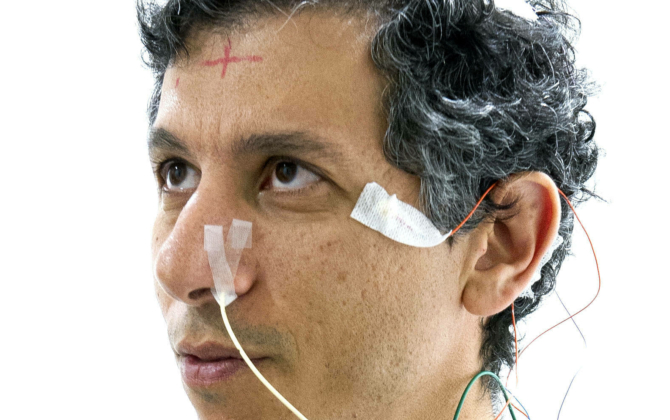Jump to
Obstructive sleep apnoea is a sleep disorder that affects more than 4% of the population and can lead to symptoms from daytime drowsiness to high blood pressure. People with sleep apnoea are often not breathing normally during sleep and may experience periods where the airway closes and they are unable to breathe. In severe sleep apnoea this can occur 50 – 60 times each hour. That is once each minute. The closure of the upper airway is thought to be due to a number of factors, one of which is that the neural drive to the airway muscles is insufficient in people with sleep apnoea. In our lab, we have made the first extensive recordings from the major muscle of the upper airway, genioglossus. We have shown that the neural drive to this muscle is very complex, more so than any limb muscle. At NeuRA, we have also pioneered new methods to image this muscle using fMRI and ultrasound. We are now planning to look at how changes in muscle architecture and mechanics relate to the neural drive to the muscle and whether that relationship is maintained in people with sleep apnoea.


